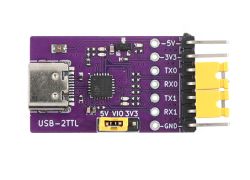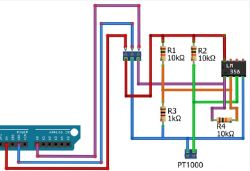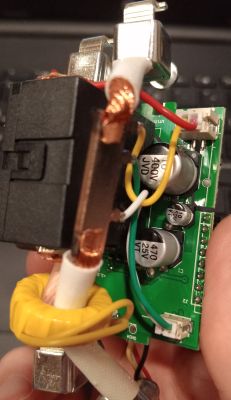Hello.
Is 4x1mm2 wire instead of 3x1.5mm2 a good idea for lighting?
Maybe I can explain why I want it that way first. I am in the process of shopping around for laying out the wiring in the house. I want to do it in a star topology so that in the future I will be able to do some kind of automation in the house. I don't want dimmers, so I've come up with the idea of having two bulbs for each light point (which will de facto also be a separate circuit at once). Normally, I understand that a 3x1.5mm2 cable would go to the double pushbutton and then a 4x1.5mm2 cable would come out of the pushbutton (although I think it could be smaller) to the chandelier, which has two separate lighting options. As I want to have automation I will dispense with the standard push buttons and the control of what is lit will be "in the switchboard" so to speak. The 4x1.5mm2 wire is more expensive and the 4x1mm2 wire is almost the same price as the 3x1.5mm2 wire.
In addition, it seems to me that with a 4-core cable I have the possibility of doing the lighting directly on direct current, e.g. 24V keeping the same scheme, that the light point has two bulbs lighting independently, because I have two pairs of wires + and - (dc probably does not need earthing).
With the current wattage of the bulbs, this cross-section of wires should not be a problem (especially as the circuit will consist of a single light point). From what I have read, even 0.75mm2 would suffice, but it is accepted that 1.5mm2 is used because it has greater resistance to mechanical damage (some wire breaks).
Now my concern:
Maybe I'll point out right away that I'm not going to stitch it up but want to hire an electrician, I'll lay out the wires myself.
1) How do I protect this as it will be on AC, I didn't see 2F differentials as it will actually be a bit like a two phase circuit then (earth, neutral, phase 1 and phase 2)?
Two 1F differentials somehow bundled together? Is it even possible to protect this well?
2) Similarly, when this will be on DC, I understand you would also need something anti-short-circuit? Although I must admit that doing the lighting as a DC circuit I understand less.
The way I see it is that there is a 24V power supply in the switchgear and to it there are somehow, just as there are rather no separate outputs for each circuit just one, to which all lighting circuits are connected via some relays. And now the power supply gives 24V all the time, but when I switch on one bulb, say 12W, it should give 0.5A, then I switch on another 12W, and again another 0.5A. How will it know to increase the current and by how much. What if I switch on a 6W bulb now, will it know to increase it by 0.25A? Is this because, for example, a 12W bulb has half the resistance of a 6W bulb and this will happen automatically, because the power supply will adapt to the resistance?
3) All kinds of connectors, inputs in some differentiators are probably designed more with 1.5mm2 in mind and won't 1mm2 sit "loosely" there? You probably need to take this into account when buying accessories or at least buy some sleeves to make 1mm2->1.5mm2 so that it sits nicely and the contact is decent.
Are there any hazards I haven't thought of? Maybe this is a silly idea in general and it is done differently?
AI: What will be roughly the lengths of the individual lighting circuits and what will be the maximum wattage (W) per circuit? .
I think a maximum of 15m and a total power of probably a maximum of 30W.
AI: Do you eventually plan to power the lighting from the 230V AC mains, from a DC power supply (24V), or do you want to be able to have both solutions? .
Both solutions.
Is 4x1mm2 wire instead of 3x1.5mm2 a good idea for lighting?
Maybe I can explain why I want it that way first. I am in the process of shopping around for laying out the wiring in the house. I want to do it in a star topology so that in the future I will be able to do some kind of automation in the house. I don't want dimmers, so I've come up with the idea of having two bulbs for each light point (which will de facto also be a separate circuit at once). Normally, I understand that a 3x1.5mm2 cable would go to the double pushbutton and then a 4x1.5mm2 cable would come out of the pushbutton (although I think it could be smaller) to the chandelier, which has two separate lighting options. As I want to have automation I will dispense with the standard push buttons and the control of what is lit will be "in the switchboard" so to speak. The 4x1.5mm2 wire is more expensive and the 4x1mm2 wire is almost the same price as the 3x1.5mm2 wire.
In addition, it seems to me that with a 4-core cable I have the possibility of doing the lighting directly on direct current, e.g. 24V keeping the same scheme, that the light point has two bulbs lighting independently, because I have two pairs of wires + and - (dc probably does not need earthing).
With the current wattage of the bulbs, this cross-section of wires should not be a problem (especially as the circuit will consist of a single light point). From what I have read, even 0.75mm2 would suffice, but it is accepted that 1.5mm2 is used because it has greater resistance to mechanical damage (some wire breaks).
Now my concern:
Maybe I'll point out right away that I'm not going to stitch it up but want to hire an electrician, I'll lay out the wires myself.
1) How do I protect this as it will be on AC, I didn't see 2F differentials as it will actually be a bit like a two phase circuit then (earth, neutral, phase 1 and phase 2)?
Two 1F differentials somehow bundled together? Is it even possible to protect this well?
2) Similarly, when this will be on DC, I understand you would also need something anti-short-circuit? Although I must admit that doing the lighting as a DC circuit I understand less.
The way I see it is that there is a 24V power supply in the switchgear and to it there are somehow, just as there are rather no separate outputs for each circuit just one, to which all lighting circuits are connected via some relays. And now the power supply gives 24V all the time, but when I switch on one bulb, say 12W, it should give 0.5A, then I switch on another 12W, and again another 0.5A. How will it know to increase the current and by how much. What if I switch on a 6W bulb now, will it know to increase it by 0.25A? Is this because, for example, a 12W bulb has half the resistance of a 6W bulb and this will happen automatically, because the power supply will adapt to the resistance?
3) All kinds of connectors, inputs in some differentiators are probably designed more with 1.5mm2 in mind and won't 1mm2 sit "loosely" there? You probably need to take this into account when buying accessories or at least buy some sleeves to make 1mm2->1.5mm2 so that it sits nicely and the contact is decent.
Are there any hazards I haven't thought of? Maybe this is a silly idea in general and it is done differently?
AI: What will be roughly the lengths of the individual lighting circuits and what will be the maximum wattage (W) per circuit? .
I think a maximum of 15m and a total power of probably a maximum of 30W.
AI: Do you eventually plan to power the lighting from the 230V AC mains, from a DC power supply (24V), or do you want to be able to have both solutions? .
Both solutions.





